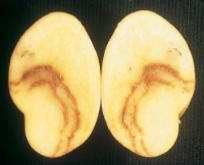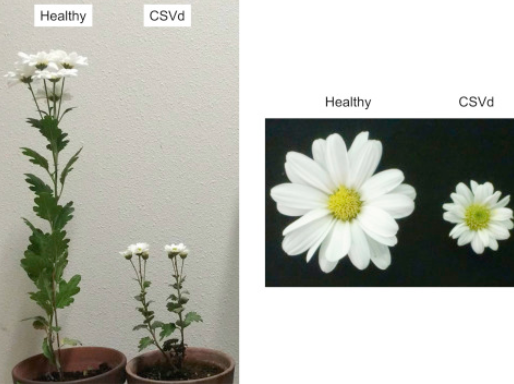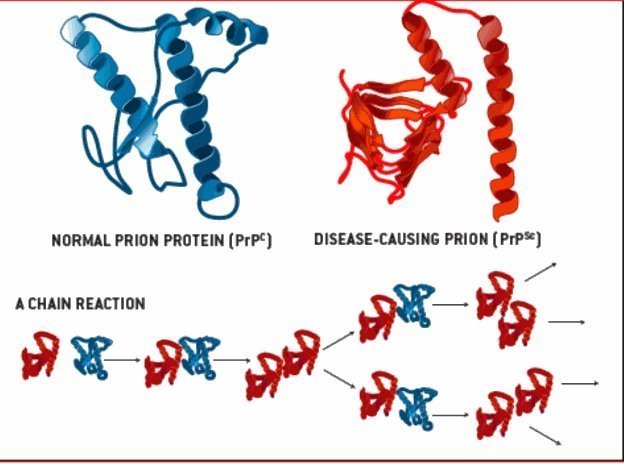VIROIDS
Viroids are small infectious agents, composed of a single- stranded circular RNA without a capsid. It was discovered by T. O. Diener in 1971. It differs from viruses only in that it lacks a capsid, and hence the name viroid.
The viroid RNA does not code for any gene, hence they cannot replicate themselves. After infection, they use the RNA Polymerase of host cell to replicate their RNA.
Viroids are mostly plant pathogens. Only a single human pathogen had been identified.
Plant diseases:
- Potato spindle tuber disease – caused by Potato spindle tuber viroid (first viroid discovered)
- Chrysanthemum stunt disease


Human disease: Hepatitis D
It is caused by HDV (Hepatitis D Viroid). It is the smallest viroid known to infect animals. The disease causes liver failure that leads to liver cirrhosis.
PRIONS
A prion is an infectious agent made of misfolded protein. These proteins are called prion proteins (PrP). Prions can cause fatal neurological diseases.
Prions are not like bacteria or viruses. They are formed inside the body of an organism due to improper folding of any normal protein. Normally, such misfolded proteins are destroyed by the cell. But some of them can influence normal proteins to become abnormal proteins. Such infectious proteins are called prions.
Diseases caused by prions:
- BSE – Bovine Spongiform Encephalopathy – commonly known as mad cow disease
- Scrapie disease – in sheep and goats
- Cr – Jacobs disease in humans.

LICHENS
Lichens are symbiotic associations between algae and fungi. Symbiotic association is a mutual relation where both the organisms get benefits. Lichens were first identified by Swiss botanist Simon Schwendener.
The algal component is known as phycobiont. It is autotrophic. The fungal component is mycobiont, and it is heterotrophic. Algae will prepare and provide food for the fungi. Fungi, in turn, absorb water and nutrients from the soil and give it to the algae.
Economical importance:
- Bioindicators of Environmental pollution & Biomonitors of Air quality: Lichens have the ability to absorb metal ions and heavy metal pollutants from the environment. Thus, they helps in monitoring the pollution level in soils and type of pollutant emissions in the air in the environment around them.
- Used as food, and in production of cosmetics: Lichens possess bioactive compounds with antimicrobial, anti-inflammatory, antipyretic, analgesic, antiproliferative and cytotoxic properties. Hence, they are used in the preparation of perfumes, cosmetics, and flavoring agent. Certain lichens are used ad food by humans and some animals.